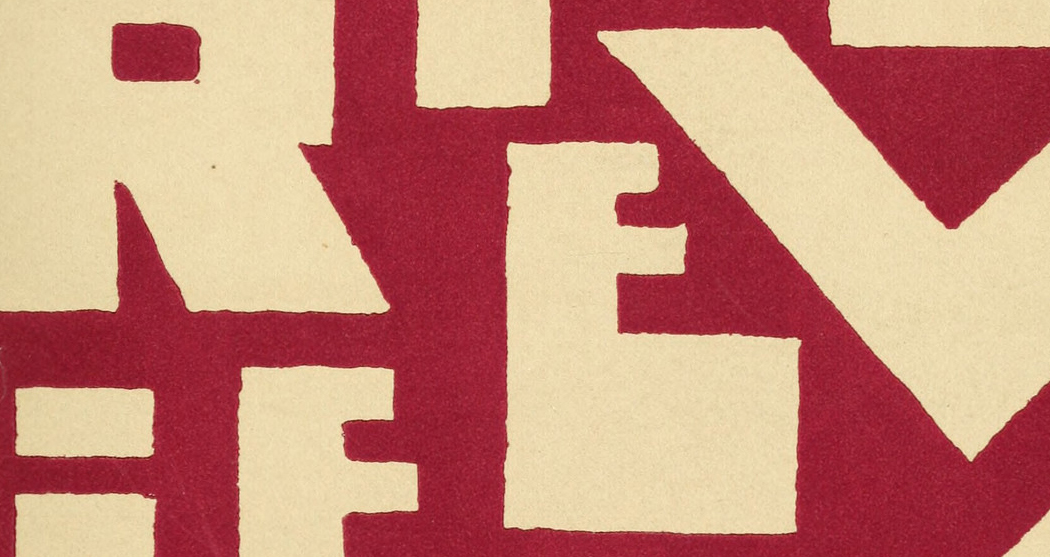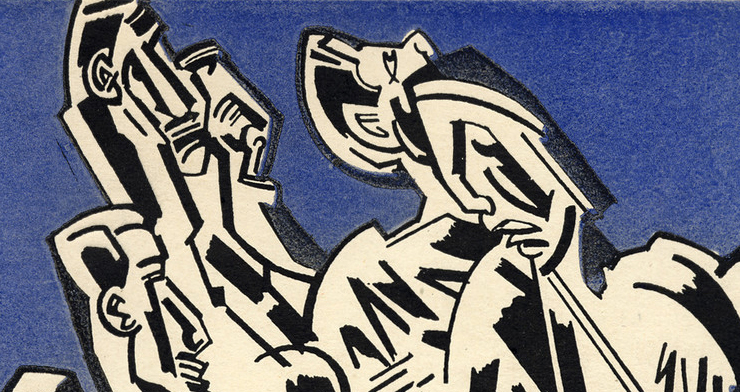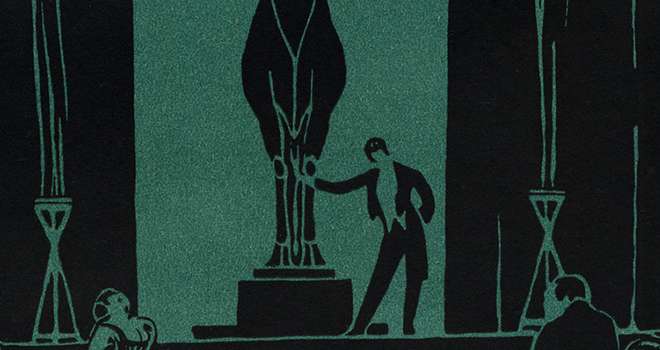Moretti's Recency Bias is Showing (or, DH is not the only interpretive mode we have)
Submitted by Steven Maulden on Mon, 03/04/2019 - 17:45Moretti's problems are evident by the time he gets to section 4. He is explaining network mapping in the context of Shakespeare (Was this a thing? Do a lot of DH'ers use Shakespeare as some kind of control by which to prove their DH tools?), and highlights a pretty serious concern -- how do you weigh interactions between characters? How do you highlight that weight? What about one way communication? I would assume that you could just use arrows (one-way arrow means a one-way conversation, bold/different colored arrows show different levels of communication, depending on an included table/chart), but apparently that's not a thing. So alright, that's a problem that should be solved. I can see that, 100%.
But then section 2 comes along and Moretti seems to lose the plot. It starts off well enough in the beginning sentences, when he says that using a network map like this can reduce the play into something that is far less than its consituent components. Basically, we shouldn't forget the context in which all of these character interactions take place in. Alright. I'm on board.
But then, he says "a model allows you to see the underlying structures of a complex object. It's like an X-ray: suddenly, you see the region of death of Figure 5, which is otherwise hidden by the very richness of the play" (4). What? Is he saying that it's particularly hard to note the fact that everyone in Hamlet's court is killed at the end of the play? That was noted back in my junior Shakespeare class in 2010. I wrote it off as miswording, perhaps a bit of overzealousness even, but he continues. He says on page 5 that "What is done is never undone; the plot as a system of regions; the hierarchy of centrality that exists among characters; finally - and its the most important thing of all, but also the most difficult - one can intervene on a model; make experiments. Take the protagonist again. For literary critics, this Figure is important because it's a very meaning-ful part of the text; there is always a lot to be said about it; we would never think of discussing Hamlet - without Hamlet. But this is exactly what network theory tempts us to do: take the Hamlet-network, remove Hamlet, to see what happens: And what happens is that the network splits almost in half."
Forgiving the awful writing, this reads a lot like "The only way people can even think of these types of problems, let alone actually see how Hamlet survives without Hamlet as a character at its center, is if they are using network mapping." That is...incorrect at best. Tom Stoppard's Rosencrantz and Guildenstern Are Dead did this rather humorously (but also effectively in a literary context) back in 1966. Or is he, perhaps, saying that these types of questions are network theory questions? I am honestly confused, and his writing does not help matters. This reads a lot like "Only Digital Humanities can solve these problems," when it should say "Digital Humanities can help us visualize these problems." I am willing to admit that I have simply misread him, that I'm missing a fundamental humility or angle of his, but even in the final section he says "So, from its very first section, the essay drifted from quanitification to the qualitative analysis of plot: the advantage of thinking in terms of space rather than time; its segmentation into regions, instead of episodes; the new, non-anthropomorphic idea of the protagonist; or, even, the "undoing" of narrative structures occasioned by the removal of specific vertices in the network" (11). This is why I'm so frustrated. This angle of literary investigation isn't new!
He does take a moment to address my issue with his position. Apparently, he has been asked often "Did I really need [network theory] to speak about Horatio and the State?" to which his answer is "No, I did not need network theory; but I probably needed networks. I had been thinking about Horatio for some time -- but I had never "seen" his position with Hamlet's field of forces until I looked at the network of the play....What I took for network theory were less concepts than visualization: the possibility of extracting characters and interactions from a dramatic structure, and turning them into a set of signs that I could see at a glance, in a two-dimensional space" (11). His answer to the problem is more an excuse for his bias -- he couldn't even think of these questions before he utilized network theory/mapping, so network theory/mapping is presented as the only way to see these questions are even there. People have been talking about character relationships -- and the centrality of protagonists -- for long before Moretti happened upon using network mapping on Hamlet. He should reflect that in his writing, or at least acknowledge that this is not the only way for people to think of the relationships between characters.
I have been struggling to see how people could be so against DH and its uses. After having read this paper, I'm beginning to understand.


